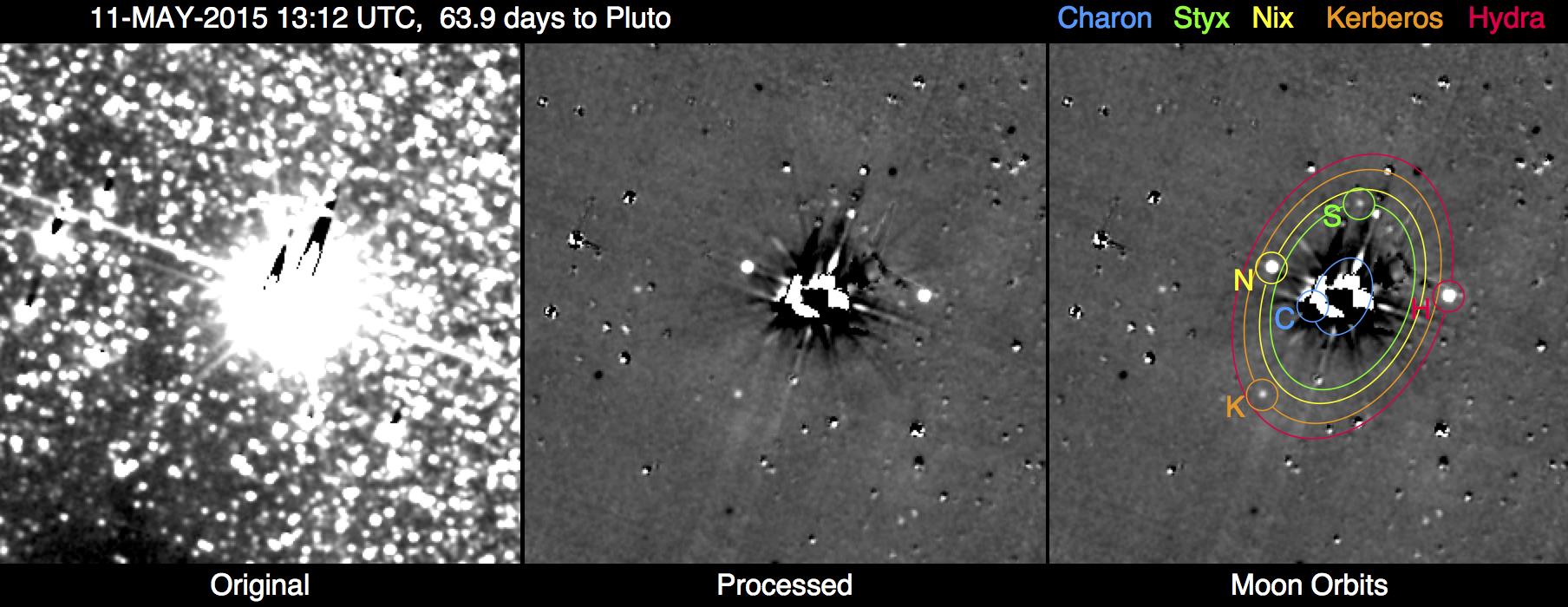All Clear For New Horizons Pluto Flyby After First Hazard Search Completed
When a "particle as small as a grain of rice" could be fatal, the search for dust and debris that might threaten the New Horizons spacecraft is an important part of the mission. The good news is that the hazard detection team just completed analyzing the first hazard search data of the Pluto system and the path looks clear for the spacecraft's safe passage on July 14.

A series of 144 10-second exposures, were made using the Long Range Reconnaissance Imager (LORRI) aboard New Horizons on May 11-12. These observations were designed to conduct a sensitive search for faint satellites, rings or dust sheets that might pose a threat to the spacecraft.
The new observations, made at a distance of 47 million miles (76 million kilometers) from Pluto, picked up all of Pluto's five known moons but no other new moons, rings or hazards of any other type. "Small satellites with about half the brightness of Pluto’s faintest known moon, Styx, could have been detected at this range. Any undiscovered moons outside the orbit of Pluto’s largest and closest moon, Charon, are thus likely smaller than 3-10 miles (5-15 kilometers) in diameter. If any undiscovered rings are present around Pluto outside Charon’s orbit, they must be very faint or narrow – less than 1,000 miles wide or reflecting less than one 5-millionth of the incoming sunlight.", said John Spencer of the Southwest Research Institute in Boulder, Colorado.
The next Pluto system hazard search will be conducted on May 29-30, with about twice the sensitivity of the first search. If any dangers are found, the New Horizons team has until July 4 to divert the spacecraft to one of three alternate routes.
New Horizons is currently 46 days and 34 million miles (55 million kilometers) away from Pluto.
For the original press release, read here.







